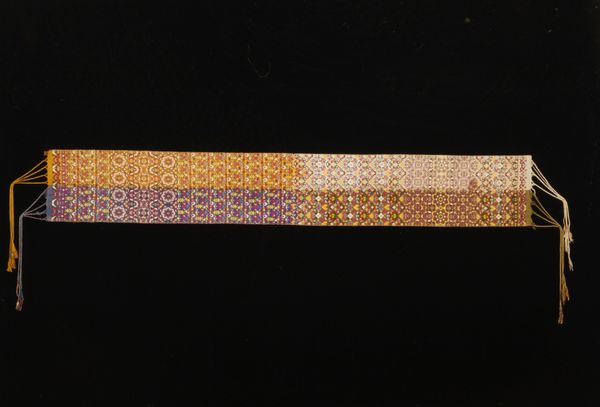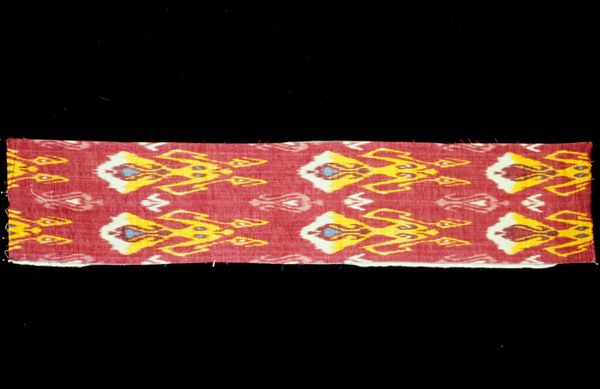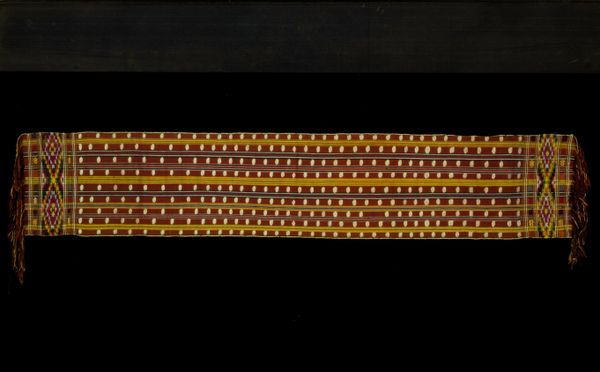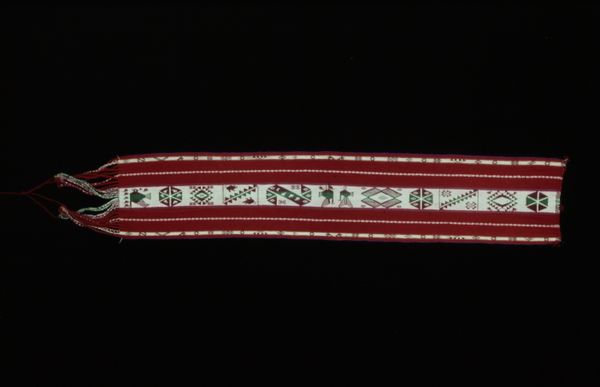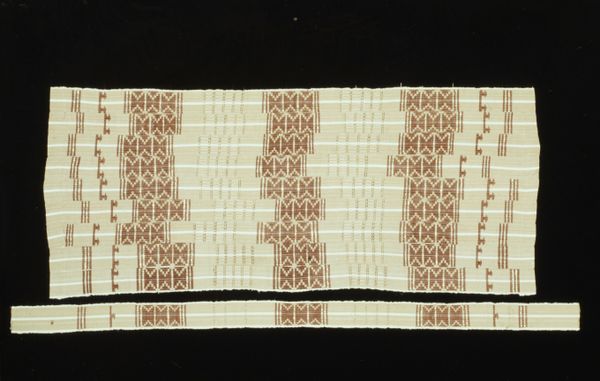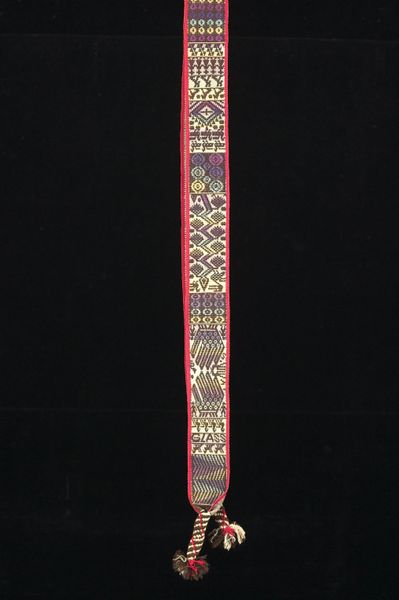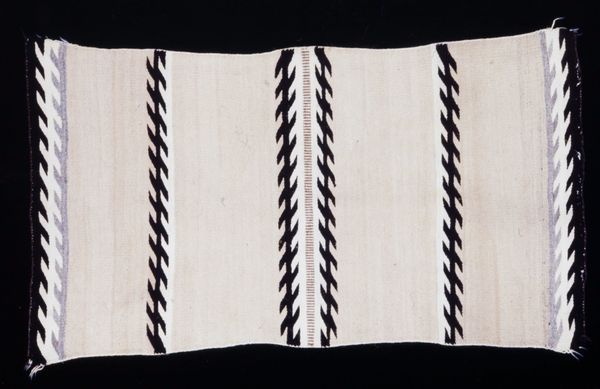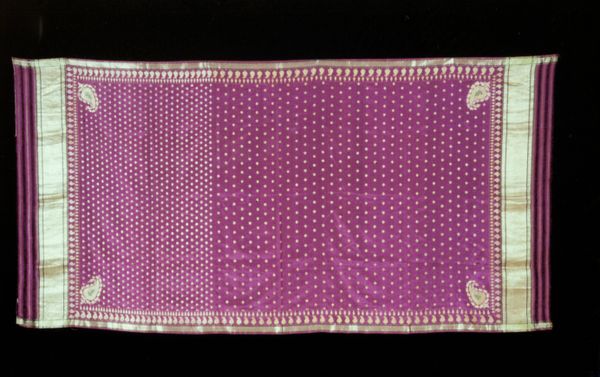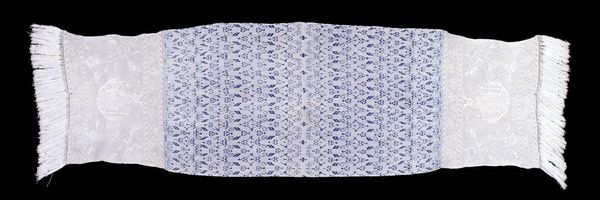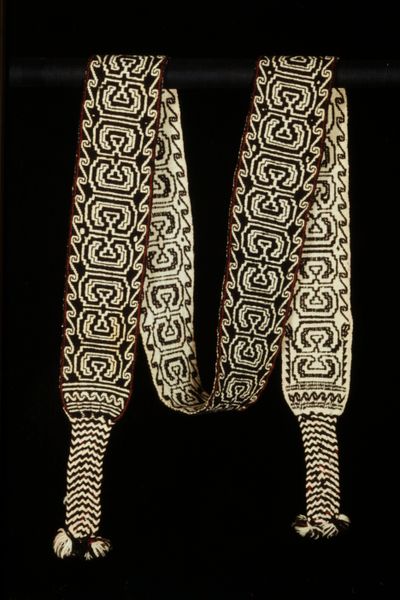
panel, silk, weaving, textile
#
panel
#
silk
#
weaving
#
textile
Dimensions: 38 x 7 1/2 in. (96.52 x 19.05 cm)
Copyright: Public Domain
Curator: Here we have a woven silk panel, dating from around the 17th century, from an anonymous creator. Editor: It has this very soothing, almost meditative rhythm. The repeating leaf pattern, with those small diamonds in between... it’s simple, but so carefully crafted. Curator: Absolutely. The regularity speaks to its cultural context, potentially indicating use within a specific social structure, where displays of precise craftsmanship would have been highly valued, demonstrating skill and refinement, potentially even the status of its commissioner or maker. It has a strong symmetry in the natural, stylized motif. Editor: Right. Thinking about textiles in that era, it had to be labor intensive. I can imagine the artisan really having a vision to execute such even spacing and symmetry! Curator: Precisely. Also, we need to consider the access to materials. Silk implies trade routes, indicating specific economic and political networks that made this weaving possible. Someone or some community, had the wherewithal to dedicate a great amount of time, access specialized knowledge, and high end materials. The scale itself dictates how to view that context of intersectionality. Editor: And the leaves—it makes me wonder what significance the plant or tree held, symbolically. Is there an overt theme? Or just meant to look attractive? Or invoke health and prosperity, you know? I see leaves often on these older silk tapestries from around this period and, if you analyze these patterns deeply, can give you insights on the values and life considerations of the society from which the art came. Curator: That’s right. By the 17th century in many parts of the world, plant motifs had long carried significant cultural meanings. Whether those leaves represent strength, endurance, fertility, or are linked to religious or philosophical systems – these are things that historical and cultural context can tell us. This weaving can serve as a mirror reflecting not just aesthetics, but deeper societal values. Editor: Exactly! For me, that tension between its straightforward appeal and potential buried symbolic significance is intriguing. Makes it an intimate, contemplative artifact, rather than a cold and distant artwork. Curator: That balance between the object's immediate presence and the interwoven layers of its cultural context is the crux of how we should approach art from the past. Editor: Totally. Makes me appreciate not only the art, but the process of discovery around the context as well!
Comments
No comments
Be the first to comment and join the conversation on the ultimate creative platform.
